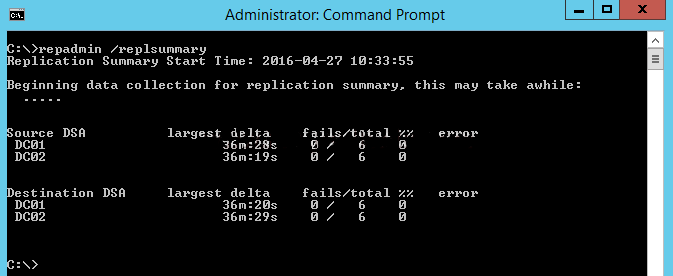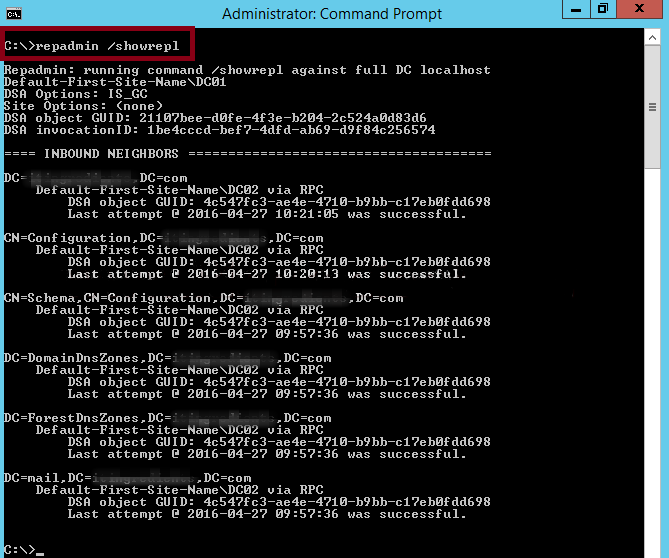This is well explained article from ManageEngine
Step 1 - Check the replication health
Run the following command :
Repadmin /replsummary
The “/replsummary” operation quickly summarizes replication state and relative health of a forest.

Step 2 - Check the inbound replication requests that are queued.
Repadmin /Queue
This command lists elements that are remaining in the replication queue. It displays inbound replication requests that the Domain Controller needs to issue in order to become consistent with its source replication partners.

Step 3 - Check the replication status
Repadmin /Showrepl
This command displays the replication status when the specified domain controller last attempted to implement an inbound replication of Active Directory partitions. It helps in figuring out the replication topology and replication failure.

Step 4 - Synchronize replication between replication partners
Repadmin /syncall
It ensures synchronization between replication partners
Step 5 - Force the KCC to recalculate the topology
Repadmin /KCC
This command forces the KCC (Knowledge Consistency Checker) on targeted domain controller(s) to immediately recalculate its inbound replication topology. It checks and creates the connections between the Domain Controllers. By default KCC runs in the background every 15 minutes to check if a new connection has been established between DCs.

Step 6 - Force replication
Repadmin /replicate
This command forces the replication of the specified directory partition to the destination domain controller from the source DC.
FAQs:
-
How do I check my AD replication status?
Running the repadmin /showrepl can help you view the replication status.
If you would like an overall replication health summary, the command repadmin /replsummary should help. -
How do I fix Active Directory replication issues?
To diagnose replication errors, users can run the AD status replication tool that is available on DCs or read the replication status by running repadmin /showrepl.
To view only the replication errors, use the command: repadmin /showrepl /errorsonly
-
How do you force AD replication?
To force replication between two domain controllers, run the following command on the DC you wish to update:
repadmin /syncall <DC-name> /AeD
In case you want to make changes on a DC and push replication to other DCs, the following command should do the trick:
repadmin /syncall <DC-name> /APeD
-
How often does AD replication occur?
Intra-site replication: With the exception of critical directory updates that are replicated immediately, the source DC updates changes to its closest replication partner every 15 seconds.
Inter-site replication: By default, the replication interval is 180 minutes and can be adjusted to be as low as 15 minutes.
-
What is the default replication time for Active Directory?
Intra-site replication: With the exception of critical directory updates that are replicated immediately, the source DC updates changes to its closest replication partner every 15 seconds.
Inter-site replication: By default, the replication interval is 180 minutes and can be adjusted to be as low as 15 minutes.
To change the default replication time, users can go into the Active Directory Sites and Services snap-in → Inter-site transport container → IP container → Site link you want to modify the interval on → Enter your desired value besides "Replicate every" → Save changes.
No comments:
Post a Comment